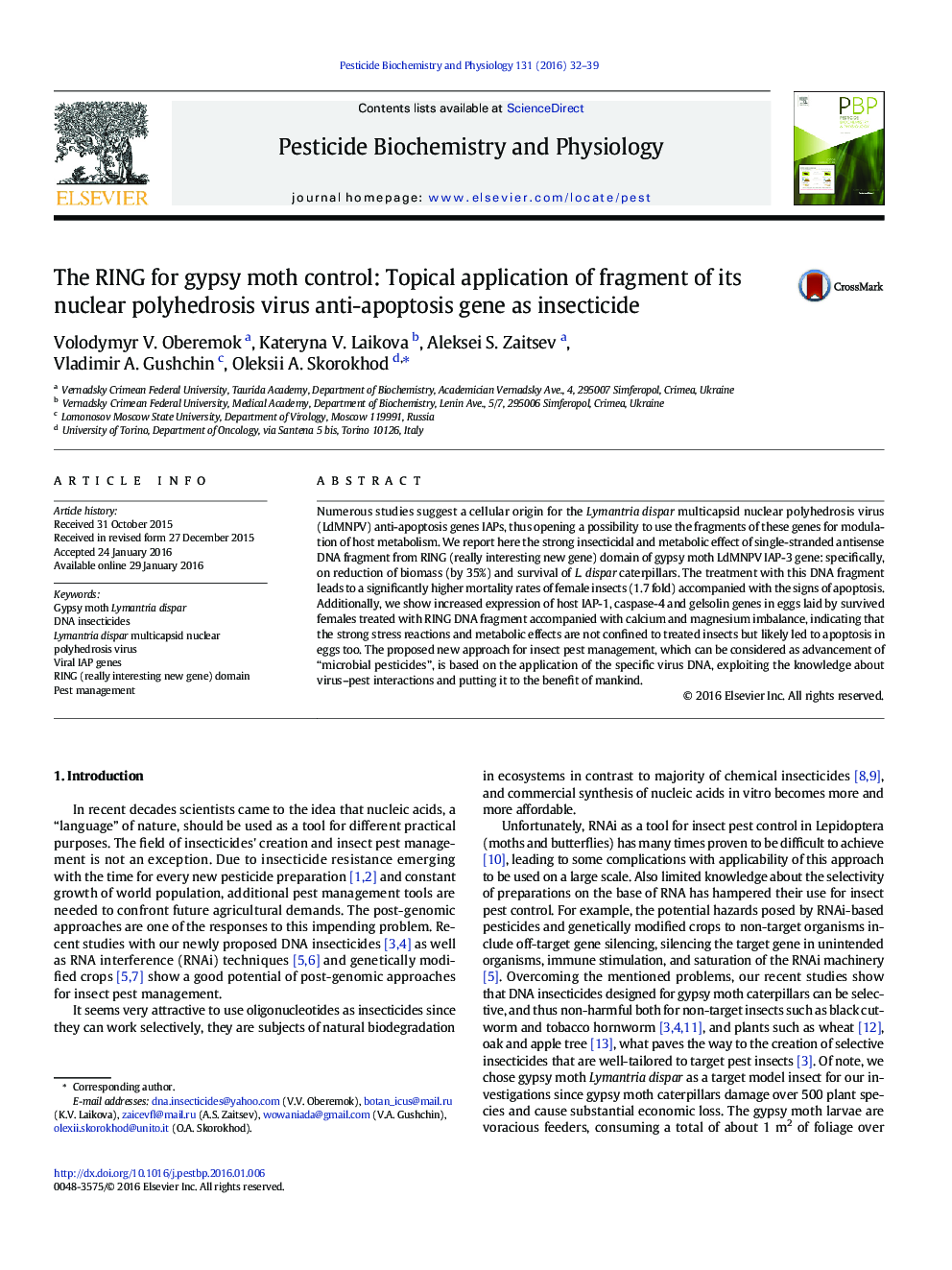| Article ID | Journal | Published Year | Pages | File Type |
|---|---|---|---|---|
| 2008954 | Pesticide Biochemistry and Physiology | 2016 | 8 Pages |
•RING DNA insecticide works against gypsy moth caterpillars in picomolar range.•RING DNA insecticide has both direct and prolonged insecticidal effects on the moth.•The use of highly conservative RING sequence could resolve insecticide resistance.•RING DNA insecticide is short oligonucleotide and could be easily synthesized.
Numerous studies suggest a cellular origin for the Lymantria dispar multicapsid nuclear polyhedrosis virus (LdMNPV) anti-apoptosis genes IAPs, thus opening a possibility to use the fragments of these genes for modulation of host metabolism. We report here the strong insecticidal and metabolic effect of single-stranded antisense DNA fragment from RING (really interesting new gene) domain of gypsy moth LdMNPV IAP-3 gene: specifically, on reduction of biomass (by 35%) and survival of L. dispar caterpillars. The treatment with this DNA fragment leads to a significantly higher mortality rates of female insects (1.7 fold) accompanied with the signs of apoptosis. Additionally, we show increased expression of host IAP-1, caspase-4 and gelsolin genes in eggs laid by survived females treated with RING DNA fragment accompanied with calcium and magnesium imbalance, indicating that the strong stress reactions and metabolic effects are not confined to treated insects but likely led to apoptosis in eggs too. The proposed new approach for insect pest management, which can be considered as advancement of “microbial pesticides”, is based on the application of the specific virus DNA, exploiting the knowledge about virus–pest interactions and putting it to the benefit of mankind.
Graphical abstractFigure optionsDownload full-size imageDownload as PowerPoint slide
